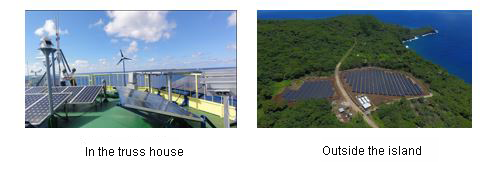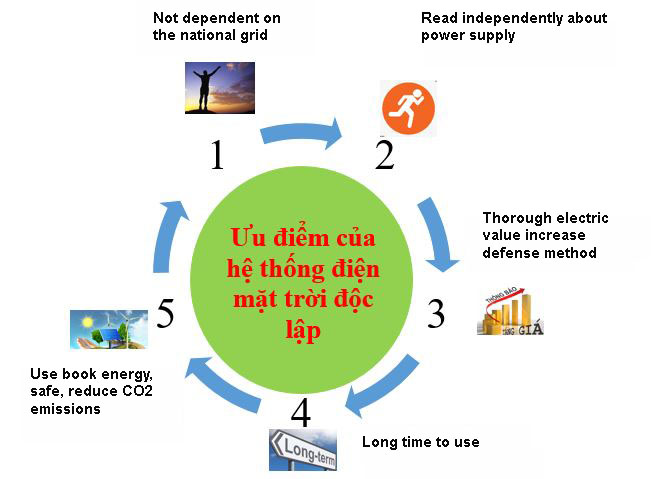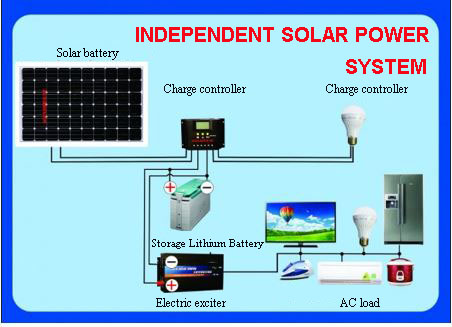Independent solar power
Mục lục
What is stand-alone solar power system?
Standalone solar power system and grid connected solar power system are two solar power solutions with many similarities. However, the most obvious difference between these two systems is that the grid-tied solar power system uses the grid to store electricity, while the stand-alone solar power system uses batteries to store electricity. Independent solar power system operates on its own to provide electricity for domestic electricity-consuming devices without connecting to the national grid.
 |
Where is it suitable to install independent solar power?
The stand-alone solar power system is suitable for areas where there is no national grid electricity, remote island areas, large wiring costs, or an unstable power system.
Advantages of stand-alone solar power system

Independent solar power system quality assurance factors:
Independent solar power systems we can easily install in many companies and households. However, do you know what is a quality stand-alone solar power system?
Independent solar power systems we can easily install in many companies and households. However, do you know what is a quality stand-alone solar power system?
- A quality stand-alone solar power system is a system with a capacity that matches the needs.
- High system performance. This greatly depends on the quality of the panels and the DC-AC inverter.
- The process of installing panels must be scientific, so that the panels must absorb the most solar energy.
- Selection of components and accessories for system installation must be of high quality and safety. It helps the system operation process to reduce energy loss.
- The independent solar power system needs a scientific design and construction unit to make the operation, repair and maintenance of the system easy and convenient.
- The quality of the solar power source is independent of the load.
- Ensure the structure and aesthetics of the project when installing independent solar power.
Structure of an independent solar power system
The main structure of an independent solar power system includes:
- Solar panels.
- Solar charge controller.
- Energy storage system (battery).
- DC/AC inverter power adapter.
Working principle of stand-alone solar power system
 |
Solar energy is directly absorbed through solar panels generating DC current. Then through a grid-tied converter (DC/AC inverter). The electric current is converted into AC, with the same phase, frequency, and amplitude as the national grid. The system will mix with the national grid to provide electricity for electrical equipment.
- When the grid-tied capacity is equal to the load capacity (Loads), the load consumes electricity entirely from the solar cell.
- If the consumed power is greater than the grid-connected capacity, the load will take up more grid power to compensate.
- When the consumed load capacity is less than the grid-tied capacity, electricity from the grid-tie will be generated to the grid. This amount of electricity returned to the grid will be purchased by EVN according to the official letter of the Prime Minister on encouraging the development of solar power projects in Vietnam. If customers do not use up, they can sell it back to the government, while optimizing costs and making profits right away.
See more: Floating solar power solutions.


